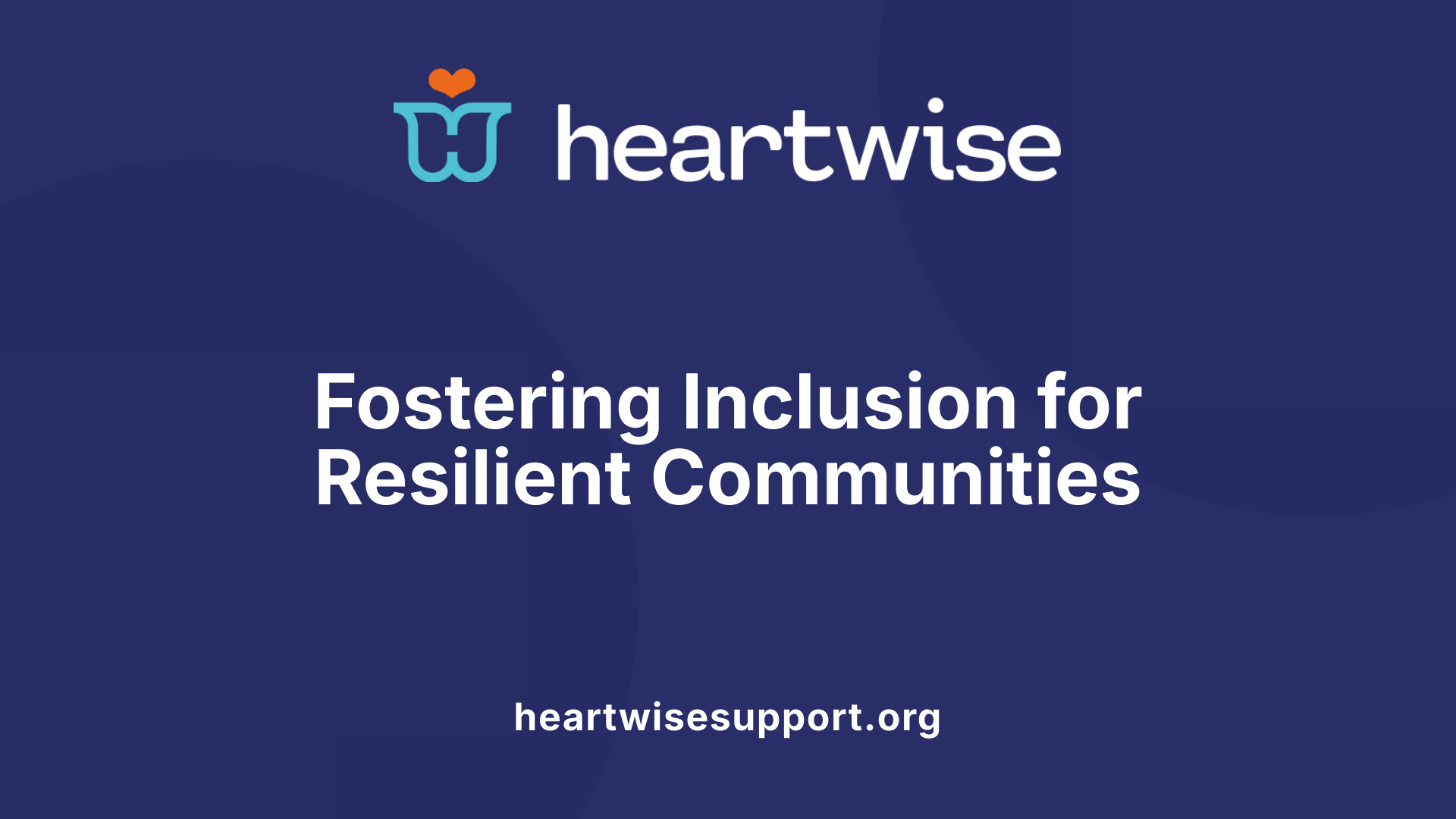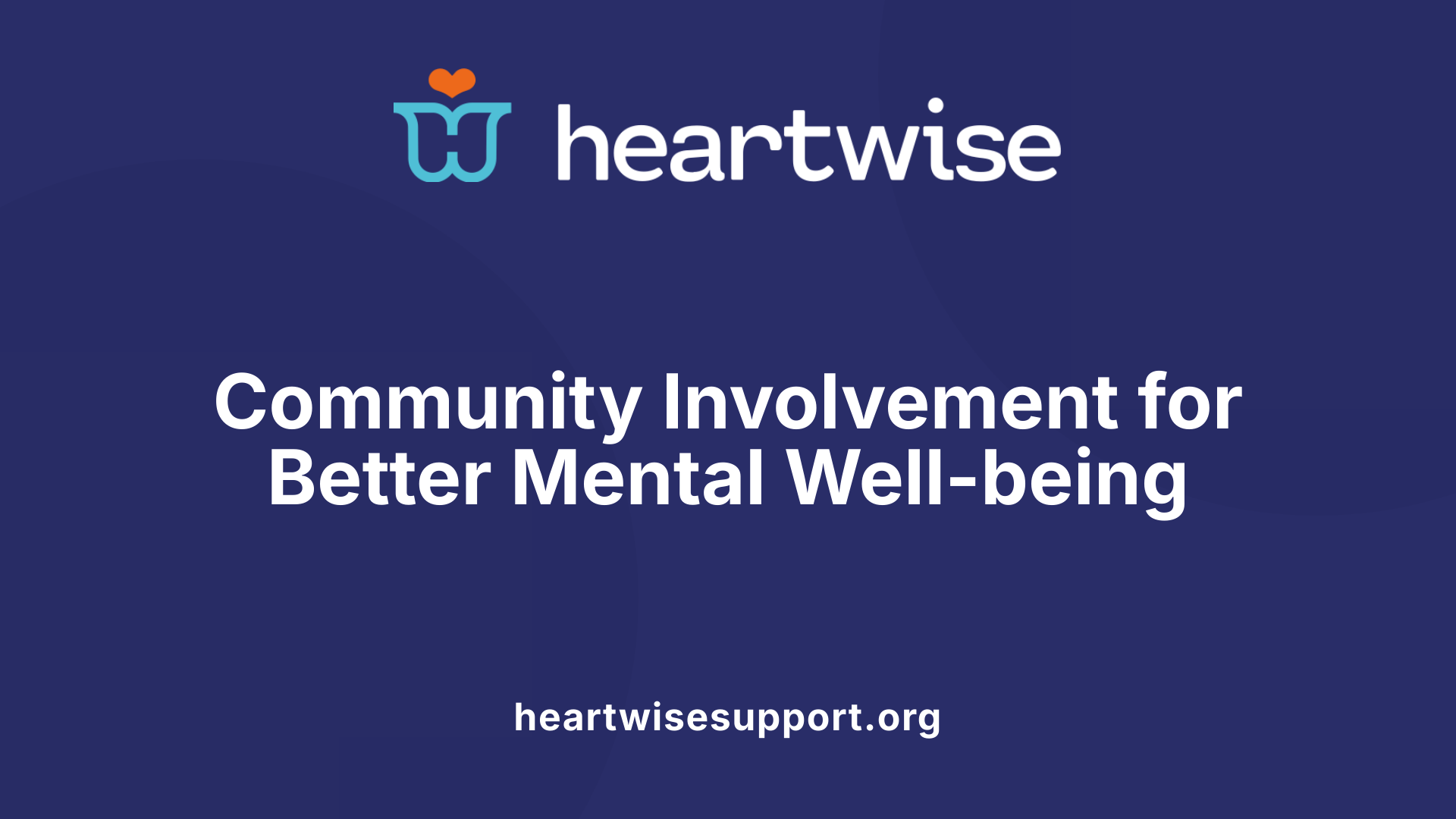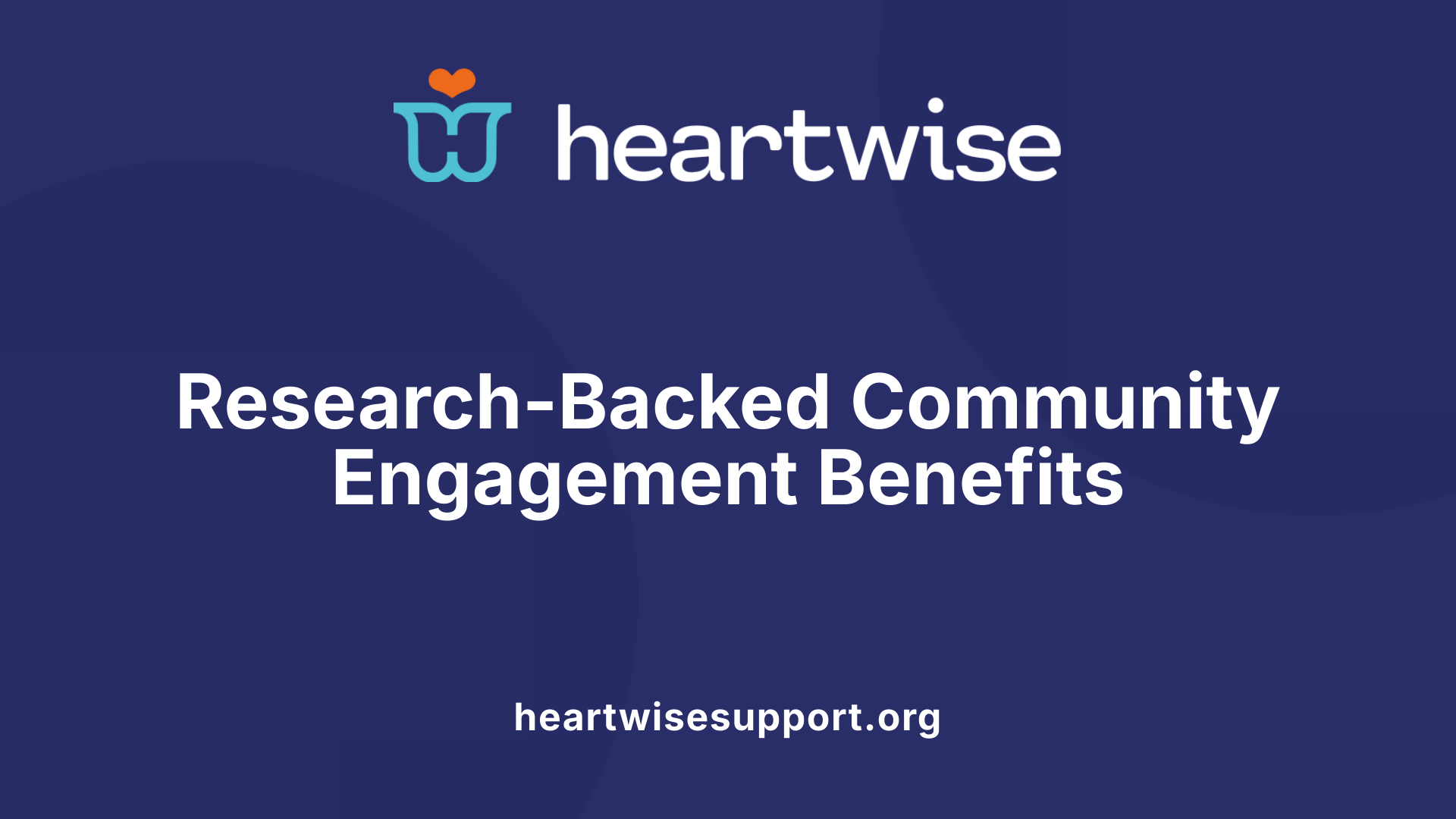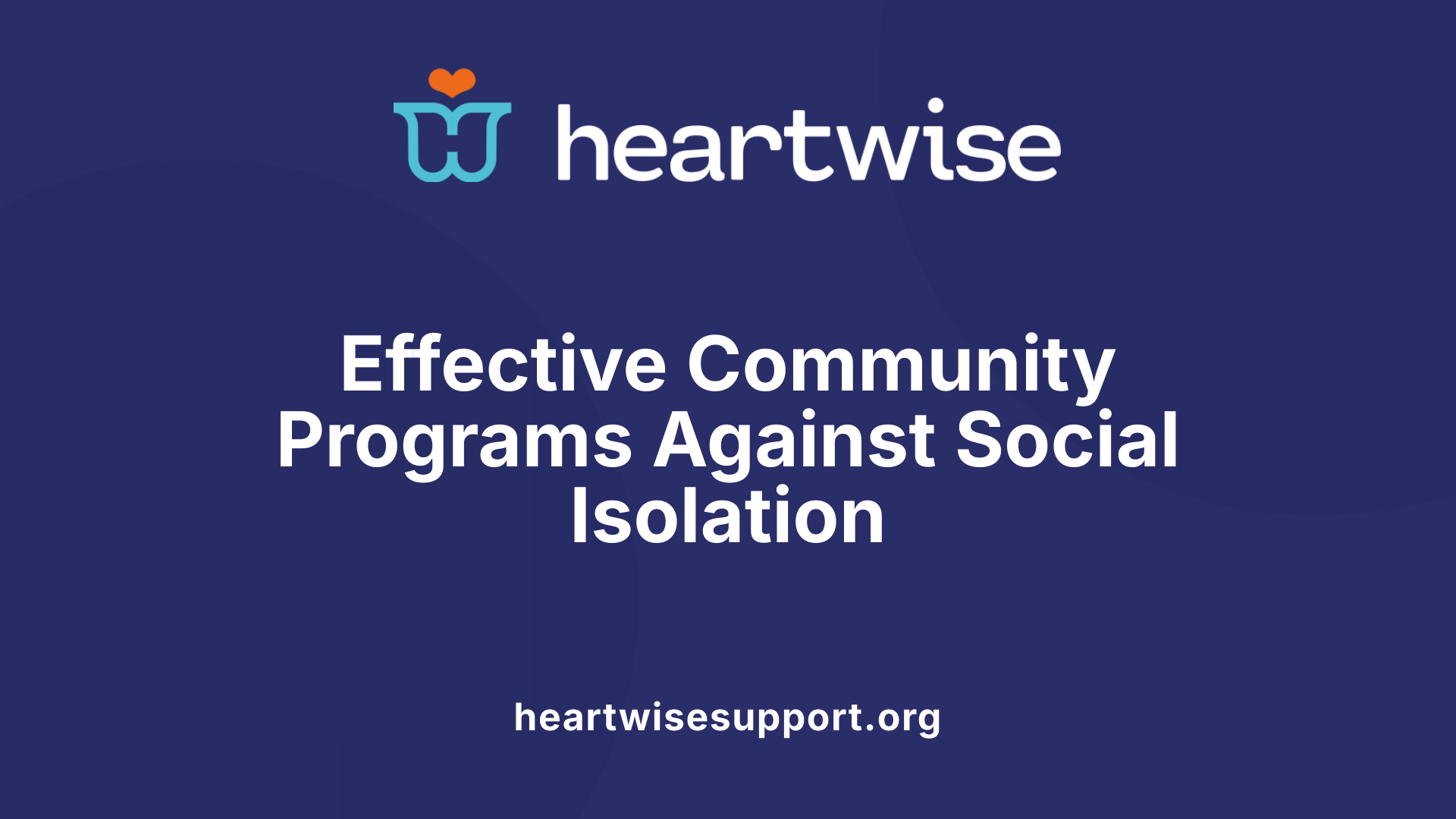Understanding the Power of Community in Combating Social Isolation
Social isolation is a growing health epidemic affecting millions worldwide, with profound impacts on mental and physical well-being. Community engagement emerges as a vital strategy to foster social bonds, reduce loneliness, and enhance overall health. This article explores how active participation in community life can lead to more inclusive, connected, and resilient communities, ultimately alleviating the burden of social isolation.
The Significance of Social Inclusion in Community Building

Why is social inclusion important in community building efforts?
Social inclusion plays a vital role in shaping equitable and healthy communities. When all individuals are given the opportunity to participate fully, regardless of their background, age, ability, or socioeconomic status, communities become more vibrant and resilient.
Inclusive environments foster diversity by encouraging interactions among different groups. This diversity enhances trust and understanding, which are fundamental for social cohesion.
Effective community building involves ensuring access to resources, services, and opportunities, which helps combat social exclusion and reduces feelings of loneliness and marginalization.
Research shows that social inclusion positively impacts mental and physical health. It decreases risks of depression, anxiety, and physical ailments associated with social isolation.
Furthermore, inclusive communities promote human rights and respect for dignity. They support community members' well-being and value their contributions, creating a sense of belonging and purpose.
Economic benefits also follow from social inclusion, as productive engagement and reduced social costs lead to more sustainable development.
In essence, fostering social inclusion is about creating environments where everyone feels valued, respected, and empowered to contribute. This approach strengthens community bonds and promotes long-term societal resilience.
| Aspect | Impact | Additional Details |
|---|---|---|
| Mental health | Reduces depression, anxiety, loneliness | Community programs, support groups, inclusive activities |
| Physical health | Lowers risk of chronic illnesses | Access to healthcare, social activities encouraging mobility |
| Social cohesion | Builds trust and understanding | Diverse interactions, shared events, cultural exchanges |
| Economic | Enhances productivity, reduces costs | Inclusive policies, accessible employment and education |
| Human rights | Promotes dignity and respect | Equal access to resources and community participation |
Creating communities that prioritize social inclusion involves thoughtful design, such as accessible public spaces, community-led initiatives, and policies that address barriers faced by vulnerable groups. Incorporating technology, promoting cultural awareness, and fostering interpersonal connections through activities like community gardens or intergenerational programs are practical steps in this direction.
How Community Participation Enhances Mental Health

What are the mental health benefits of community involvement?
Engaging with community activities offers significant mental health advantages. Regular participation can substantially lower feelings of loneliness and social isolation, which are linked to depression, anxiety, and other mental health conditions.
Being part of a community provides a sense of belonging and acceptance, fostering emotional stability. Activities like volunteering, attending community events, or joining support groups give individuals purpose and pride, strengthening their sense of self-worth.
Building social support networks is crucial in providing trusted contacts for emotional assistance during tough times. This sense of safety and trust enhances overall well-being.
Participation can also improve self-esteem and resilience. Involvement in shared activities, especially those that include intergenerational or culturally inclusive programs, promotes social bonds and a feeling of community belonging.
Research highlights that community engagement boosts mental clarity and helps individuals better manage stress, anxiety, and depression. It encourages active involvement, which helps in developing psychological resilience, ensuring people are more equipped to face mental health challenges.
Overall, staying engaged in community life not only fosters social connections but also supports mental stability and resilience, leading to healthier, happier lives.
Strategies to Strengthen Social Connections through Community Engagement

What strategies enhance social connectivity through community participation?
Building stronger social bonds within communities requires intentional strategies that promote inclusivity and active participation. Creating welcoming public spaces, such as parks, community centers, and green spaces, encourages residents to gather, interact, and form meaningful relationships. These environments should be designed with accessibility and cultural sensitivity in mind, ensuring all community members feel comfortable and included.
Investing in accessible transportation systems and designing walkable neighborhoods are vital components. When residents can easily travel to local hubs, participate in events, and visit supportive services, spontaneous conversations and planned gatherings become more common. Such infrastructure reduces barriers, especially for seniors, persons with disabilities, and newcomers.
Programs that foster social interaction are central to community cohesion. Volunteer initiatives, intergenerational activities, arts and cultural programs, and community events provide platforms for diverse groups to connect. These activities not only promote social engagement but also help build understanding and respect among different age groups and cultural backgrounds.
Digital tools play a complementary role. Online community groups, virtual events, and social platforms can bridge physical gaps, especially in rural or underserved areas. However, combining digital engagement with traditional face-to-face interactions yields the best outcomes.
Community-led decision-making and inclusive planning ensure that residents have a voice in shaping local environments and programs. When residents participate in planning processes, they develop a sense of ownership and trust, increasing engagement and social solidarity.
To realize these strategies effectively, coordinated efforts supported by local policies and investment are necessary. Infrastructure improvements, social programs, and community partnerships together contribute to creating an environment where social bonds are cultivated and maintained, enriching the overall quality of life.
Community Development Initiatives and Their Role in Promoting Inclusion
How do community development initiatives promote social inclusion?
Community development initiatives serve as vital tools to foster social inclusion by actively engaging diverse groups within the neighborhood or region. These programs involve members from different backgrounds, ages, and abilities in decision-making processes, giving them a voice in shaping their community. When residents contribute to planning and activities, they develop a sense of ownership and belonging that mitigates feelings of social exclusion.
Creating accessible and safe environments is central to these efforts. This includes designing public spaces, housing, and transportation that cater to everyone, including people with disabilities or mobility challenges. Safe spaces encourage participation in social, educational, and vocational activities.
To effectively address barriers faced by marginalized groups, community development projects often include awareness-raising campaigns and outreach programs. These initiatives promote positive attitudes, empathy, and respect towards cultural, linguistic, or physical differences. Collaboration with local stakeholders such as faith organizations, advocacy groups, and government agencies ensures tailored, inclusive policies.
By implementing these strategies, community development initiatives reduce social divides and promote cohesion. Residents experience greater opportunities for social participation, which enhances their mental and physical well-being. Ultimately, these efforts create equitable, vibrant communities where diversity is valued and all members can thrive.
The Evidence Supporting Community Engagement in Alleviating Social Isolation
 Research consistently shows that actively participating in community life can significantly reduce feelings of social isolation, particularly among vulnerable populations like older adults.
Research consistently shows that actively participating in community life can significantly reduce feelings of social isolation, particularly among vulnerable populations like older adults.
One notable example is the 'School of Health for Older People,' a community intervention carried out in low-income neighborhoods. It involved 22 weekly group sessions focusing on biological, psychological, and social health topics. The program notably improved participants' mental health, reducing psychological distress with an adjusted prevalence ratio of 0.46. Participants also reported increased social support and higher satisfaction levels, indicating that sustained engagement helps build meaningful social bonds.
Beyond targeted interventions, broader community programs such as social prescribing, intergenerational housing, green spaces, arts, and cultural activities have demonstrated substantial benefits. These initiatives promote interaction, foster social cohesion, and give individuals a sense of belonging. For example, community gardens and neighborhood events create opportunities for face-to-face contact and relationship-building, which are crucial in diminishing loneliness.
Some strategies focus on strengthening neighborhood identity. Hosting events like neighborhood parties or implementing programs like 'Know Your Neighbor' encourages residents to connect and recognize shared social identities. Such activities lead to more cohesive communities and longer-lasting social support networks.
International health organizations, including the World Health Organization, recommend comprehensive, multilevel approaches that address social determinants of health. These include creating accessible public spaces, supporting inclusive housing, and facilitating community-led initiatives.
Case studies from various countries further highlight that community-led efforts—such as senior centers, intergenerational programs, and virtual social clubs—can effectively target social isolation. Volunteer-led befriending services and memory cafés provide companionship and cognitive stimulation, especially for the elderly.
Overall, evidence underscores that community engagement, when well-designed and inclusive, is a powerful approach to combat social isolation, improve mental health, and enhance overall well-being.
Community Interventions That Have Proven Successful in Reducing Social Isolation

Can you provide examples of community interventions that successfully reduce social isolation?
Community efforts to combat social isolation have shown promising results across various settings. Organized social group activities, such as senior centers offering art classes, yoga, or communal meals, create spaces where individuals can engage, socialize, and feel part of a community. Intergenerational programs, which connect older adults with younger generations through shared projects or mentoring, foster understanding and reduce loneliness.
Support groups and befriending services are particularly effective in building personal connections. Volunteer programs where community members or trained volunteers visit or call isolated seniors provide companionship and emotional support, significantly lowering feelings of loneliness. For example, many municipalities have established volunteer 'buddies' or visiting programs tailored for elderly residents.
Technology-based interventions are increasingly vital, especially when physical meetings are challenging. Virtual social clubs, online classes, and digital communication tools enable seniors and vulnerable populations to stay connected. Memory cafés and digital literacy programs help those with mobility or cognitive issues participate in social activities from home.
Embedding these initiatives into broader community policies and collaborating with organizations like schools, health agencies, and local governments enhance their reach and sustainability. Campaigns promoting community participation and awareness further encourage residents to engage actively.
In sum, integrating diverse programs—ranging from face-to-face support to virtual interactions—has proven effective in reducing social isolation and boosting overall wellbeing.
The Relationship Between Social Participation and Mental Well-Being
What is the relationship between social participation and mental health outcomes?
Engagement in community activities plays a significant role in enhancing mental health. Social participation is closely linked to reduced levels of depression and anxiety, contributing positively to overall well-being.
Both in-person activities, such as joining clubs, volunteer work, and intellectual pursuits, and online interactions, like virtual support groups or social media, can effectively reduce depressive symptoms. These activities foster social bonds, providing emotional support and a sense of belonging.
The relationship between social participation and mental health is bidirectional. On one hand, participating in social activities can decrease feelings of loneliness and mitigate depression. On the other hand, existing depressive symptoms can limit an individual's willingness or ability to engage socially, creating a cycle of social withdrawal and worsening mental health.
Research suggests that depression tends to have a more substantial influence on social engagement than vice versa. Therefore, addressing mental health issues and promoting accessible social opportunities are both crucial.
Community programs that encourage participation—such as senior centers, intergenerational activities, and social clubs—are effective in building social support networks. These connections serve as protective factors, reducing the risk or severity of mental health problems.
Moreover, social participation improves life satisfaction by mediating psychological benefits. It alleviates feelings of isolation, helps maintain cognitive functions, and fosters a sense of purpose, all of which are vital for mental health.
Overall, fostering community involvement and social connections can significantly improve mental health outcomes, especially among vulnerable populations like the elderly and adults facing psychological challenges.
Fostering Connected Communities for a Healthier Future
Building active, inclusive communities through strategic engagement initiatives not only reduces social isolation but also fosters mental resilience, physical health, and social cohesion. As evidence-backed programs demonstrate the tangible benefits of community participation, stakeholders—from policymakers to local residents—must prioritize creating spaces, programs, and policies that encourage social bonds. By doing so, communities can become vibrant, resilient ecosystems where individuals feel valued, supported, and connected, paving the way for healthier, happier societies.
References
- The Association Between Community Participation and Loneliness ...
- [PDF] Community Development Counteracts Isolation
- Effectiveness of a community intervention to reduce social isolation ...
- Supporting Youth Loneliness & Social Isolation through Community ...
- How Can Community Engagement Reduce Social Isolation?
- Community Engagement Strategies for Isolated Seniors
- Community and Family Engagement as a Tool to Enhance Quality of ...











